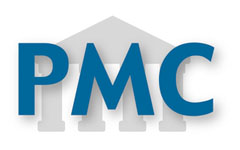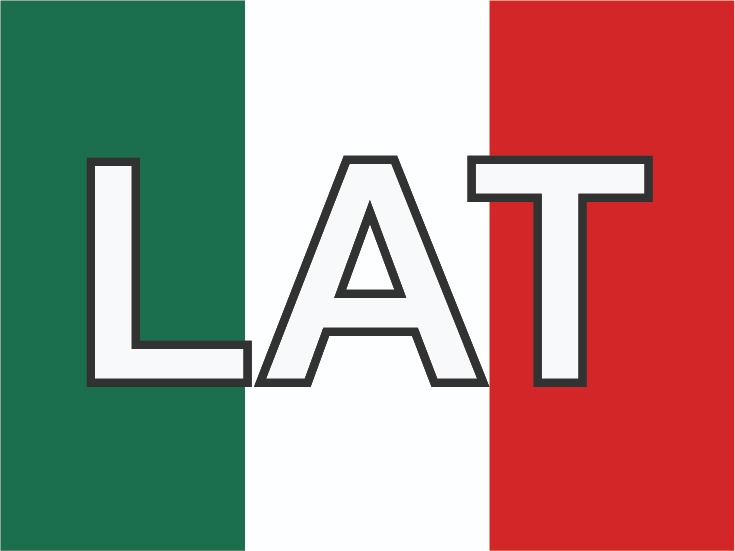Treatment of post-transplantation lymphoproliferative disorders after kidney transplant with rituximab and conversion to m-TOR inhibitor.
Abstract
Background:Post-transplantation lymphoproliferative disorders are serious complications of organ transplantation which treatment is not yet standardized.
Objective:To describe the clinical response, overall and graft survival of patients in our center with this complication after kidney transplantation, which received rituximab as part of their treatment as well as conversion to m-TOR.
Methods:Retrospective study, which included patients, diagnosed with post-transplant lymphoproliferative disorders after kidney transplantation from January 2011 to July 2014.
Results:Eight cases were found with a wide spectrum of clinical presentations. Most had monomorphic histology, 85% were associated with Epstein-Barr virus, 25% of patients had tumor involvement of the renal graft, and 12.5% had primary central nervous system lymphoma. All patients were managed with reduction of immunosuppression, conversion to m-TOR (except one who lost the graft at diagnosis) and rituximab-based therapy. The overall response rate was 87.5% (62.5% complete response, 25% partial response). Survival was 87.5% with a median follow-up of 34 months. An additional patient lost the graft, with chronic nephropathy already known. All the remaining patients had stable renal function.
Conclusions:There are no standardized treatment regimens for lymphoproliferative disorders after kidney transplantation, but these patients can be managed successfully with reduction of immunosuppression, conversion to m-TOR and rituximab-based schemes.
Authors
Downloads
References
Penn I, Hammond W, Brettschneider L, Starzl TE. Malignant lymphomas in transplantation patients. Transplant Proc. 1969;1(1):106–112.
Evens AM, Roy R, Sterrenberg D, Moll MZ, Chadburn A, Gordon LI. Post-transplantation lymphoproliferative disorders diagnosis, prognosis, and current approaches to therapy. Curr Oncol Rep. 2010;12(6):383–394.
Cockfield SM. Identifying the patient at risk for post-transplant lymphoproliferative disorder. Transpl Infect Dis. 2001;3(2):70–78.
Swerdlow S, Campo E, Harris N, Jaffe E, Pileri S, Stein H, et al. WHO Classification of tumours of haematopoietic and lymphoid tissues. Fourth edition. Lyon: WHO; 2008. pp. 343–350.
Opelz G, Dohler B. Lymphomas after solid organ transplantation a collaborative transplant study report. Am J Transplant. 2004;4(2):222–230.
Zimmermann H, Trappe RU. Therapeutic options in post-transplant lymphoproliferative disorders. Ther Adv Hematol. 2011;2(6):393–407.
Oertel SHK, Verschuuren E, Reinke P, Zeidler K, Papp-Vary M, Babel N. Effect of anti-CD 20 antibody rituximab in patients with post-transplant lymphoproliferative disorder (PTLD) Am J Transplant. 2005;5(12):2901–2906.
Choquet S, Leblond V, Herbrecht R, Socie G, Stoppa A-M , Vandenberghe P. Efficacy and safety of rituximab in B-cell post-transplantation lymphoproliferative disorders results of a prospective multicenter phase 2 study. Blood. 2006;107(8):3053–3057.
González-Barca E, Domingo-Domenech E, Capote FJ, Gómez-Codina J, Salar A, Bailen A. Prospective phase II trial of extended treatment with rituximab in patients with B-cell post-transplant lymphoproliferative disease. Haematologica. 2007;92(11):1489–1494.
Campo E, Swerdlow SH, Harris NL, Pileri S, Stein H, Jaffe ES. The 2008 WHO classification of lymphoid neoplasms and beyond evolving concepts and practical applications. Blood. 2011;117(19):5019–5032.
Nieto-Ríos JF, Aristizabal-Alzate A, Ocampo-Kohn C, Vanegas-Ruiz , JJ , Velez-Echeverri C, Serna-Higuita LM. Baja incidencia de enfermedad linfoproliferativa Postrasplante renal con uso predominante de Alemtuzumab. Nefrol Diálisis Traspl. 2014;34(1):21–26.
Quinlan SC, Pfeiffer RM, Morton LM, Engels EA. Risk factors for early-onset and late-onset post-transplant lymphoproliferative disorder in kidney recipients in the United States. Am J Hematol. 2011;86(2):206–209.
Caillard S, Lelong C, Pessione F, Moulin B. French PTLD Working Group Post-transplant lymphoproliferative disorders occurring after renal transplantation in adults Report of 230 cases from the French registry. Am J Transplant. 2006;6(11):2735–2742.
Taylor AL, Marcus R, Bradley JA. Post-transplant lymphoproliferative disorders (PTLD) after solid organ transplantation. Crit Rev Oncol Hematol. 2005;56(1):155–167.
Caillard S, Dharnidharka V, Agodoa L, Bohen E, Abbott K. Posttransplant lymphoproliferative disorders after renal transplantation in the United States in era of modern immunosuppression. Transplantation. 2005;80(9):1233–1243.
Zimmermann H, Trappe RU. EBV and posttransplantation lymphoproliferative disease what to do? Hematology Am Soc Hematol Educ Program. 2013;2013:95–102.
Morscio J, Dierickx D, Nijs J, Verhoef G, Bittoun E, Vanoeteren X. Clinicopathologic comparison of plasmablastic lymphoma in HIV-positive, immunocompetent, and posttransplant patients single-center series of 25 cases and meta-analysis of 277 reported cases. Am J Surg Pathol. 2014;38(7):875–886.
Monaco AP. The role of mTOR inhibitors in the management of posttransplant malignancy. Transplantation. 2009;87(2):157–163.
Pascual J. Post-transplant lymphoproliferative disorder--the potential of proliferation signal inhibitors. Nephrol Dial Transplant. 2007;22(Supplement 1):i27–i35.
Reshef R, Vardhanabhuti S, Luskin MR, Heitjan DF, Hadjiliadis D, Goral S. Reduction of immunosuppression as initial therapy for posttransplantation lymphoproliferative disorder( bigstar) Am J Transplant. 2011;11(2):336–347.
Al-Mansour Z, Nelson BP, Evens AM. Post-transplant lymphoproliferative disease (PTLD) risk factors, diagnosis, and current treatment strategies. Curr Hematol Malig Rep. 2013;8(3):173–183.
Swinnen LJ, LeBlanc M, Grogan TM, Gordon LI, Stiff PJ, Miller AM. Prospective study of sequential reduction in immunosuppression, interferon alpha-2B, and chemotherapy for posttransplantation lymphoproliferative disorder. Transplantation. 2008;86(2):215–222.
Trappe R, Oertel S, Leblond V, Mollee P, Sender M, Reinke P. Sequential treatment with rituximab followed by CHOP chemotherapy in adult B-cell post-transplant lymphoproliferative disorder (PTLD) the prospective international multicentre phase 2 PTLD-1 trial. Lancet Oncol. 2012;13(2):196–206.
Nieto-Ríos JF. Gómez dRSM.Serna-Higuita LM.Gálvez-Cárdenas KM Enfermedad linfoproliferativa postrasplante de órgano sólido. Iatreia. 2016;29(3):312–322.
Choquet S, Oertel S, LeBlond V, Riess H, Varoqueaux N, Dorken B. Rituximab in the management of post-transplantation lymphoproliferative disorder after solid organ transplantation proceed with caution. Ann Hematol. 2007;86(8):599–607.
Phillips J, Staszewski H, Garrison M. Successful treatment of secondary hemophagocytic lymphohistiocytosis in a patient with disseminated histoplasmosis. Hematology. 2008;13(5):282–285.
Reshef R, Tsai DE. Rituximab for PTLD of the CNS: is it a "no-brainer"? Onkologie. 2008;31:650–651.
Zimmermann H, Oschlies I, Fink S, Pott C, Neumayer HH, Lehmkuhl H. Plasmablastic posttransplant lymphoma cytogenetic aberrations and lack of Epstein-Barr virus association linked with poor outcome in the prospective German Posttransplant Lymphoproliferative Disorder Registry. Transplantation. 2012;93(5):543–550.
Ghobrial IM, Habermann TM, Maurer MJ, Geyer SM, Ristow KM, Larson TS. Prognostic analysis for survival in adult solid organ transplant recipients with post-transplantation lymphoproliferative disorders. J Clin Oncol. 2005;23(30):7574–7582.
Leblond V, Dhedin N, Mamzer Bruneel MF, Choquet S, Hermine O, Porcher R. Identification of prognostic factors in 61 patients with posttransplantation lymphoproliferative disorders. J Clin Oncol. 2001;19(3):772–778.
Evens AM, David KA, Helenowski I, Nelson B, Kaufman D, Kircher SM. Multicenter analysis of 80 solid organ transplantation recipients with post-transplantation lymphoproliferative disease outcomes and prognostic factors in the modern era. J Clin Oncol. 2010;28(6):1038–1046.
Copyright (c) 2016 Universidad del Valle

This work is licensed under a Creative Commons Attribution 4.0 International License.
The copy rights of the articles published in Colombia Médica belong to the Universidad del Valle. The contents of the articles that appear in the Journal are exclusively the responsibility of the authors and do not necessarily reflect the opinions of the Editorial Committee of the Journal. It is allowed to reproduce the material published in Colombia Médica without prior authorization for non-commercial use




















